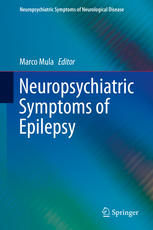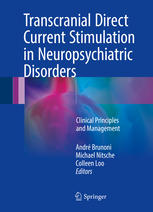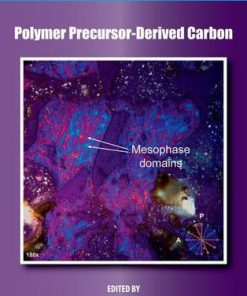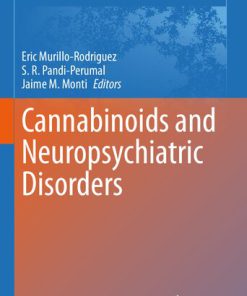Modeling Neuropsychiatric Disorders in Laboratory Animals 1st Edition by Kurt Leroy Hoffman 0081000991 9780081000991
$50.00 Original price was: $50.00.$25.00Current price is: $25.00.
Modeling Neuropsychiatric Disorders in Laboratory Animals 1st Edition by Kurt Leroy Hoffman – Ebook PDF Instant Download/DeliveryISBN: 0081000991, 9780081000991
Full download Modeling Neuropsychiatric Disorders in Laboratory Animals 1st Edition after payment.
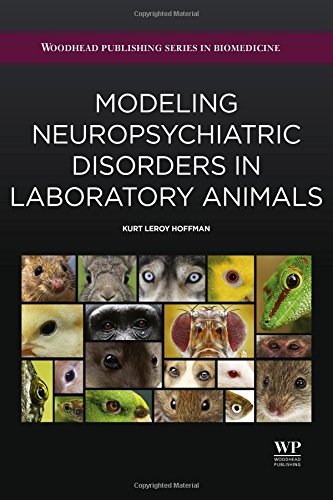
Product details:
ISBN-10 : 0081000991
ISBN-13 : 9780081000991
Author: Kurt Leroy Hoffman
Modeling Neuropsychiatric Disorders in Laboratory Animals serves as a guide for students and basic investigators in the fields of behavioral sciences, psychology, neuroscience, psychiatry, and other professionals interested in the use of animal models in preclinical research related to human neuropsychiatric disorders.
The text focuses on the rationale and theory of using animal behavior, both pathological and normal, as a tool for understanding the neural underpinnings of neuropsychiatric disorders. Chapters contain discussions on both classical and modern views on the validation of animal models for neuropsychiatric disorders, also discussing the utility of endophenotypes in modeling neuropsychiatric disease.
Modeling Neuropsychiatric Disorders in Laboratory Animals 1st Table of contents:
1: What is an animal model of a neuropsychiatric disorder?
Abstract
1.1 Introduction
1.2 What is a neuropsychiatric disorder? (and what is not?)
1.3 What is an animal model of a neuropsychiatric disorder?
1.4 General types of animal models
1.5 Animal model or model animal?
1.6 Validating an animal model
1.7 Endophenotypes and biologic markers
1.8 Chapter overview and perspectives
2: What can animal models tell us about depressive disorders?
Abstract
2.1 Depressive disorders
2.2 Neurobiology of depressive disorders
2.3 Relationship to normalcy
2.4 Endophenotypes of depressive disorders
2.5 Gene variants associated with depression
2.6 Measuring endophenotypes in rodent models
2.7 Animal models
2.8 Model animals
2.9 Chapter overview and perspectives
3: Modeling disorders of fear and anxiety in animals
Abstract
3.1 Anxiety disorders
3.2 Neurobiology of anxiety disorders
3.3 Relationship to normalcy
3.4 Endophenotypes of anxiety disorders
3.5 Genes and anxiety
3.6 Measuring endophenotypes in rodent models
3.7 Animal models
3.8 Model animals
3.9 Chapter overview and perspectives
4: Animal models for studying obsessive-compulsive and related disorders
Abstract
4.1 Obsessive–compulsive and related disorders
4.2 OCD within the internalizing dimension of disorders
4.3 OCD as a multidimensional disorder
4.4 The OCD spectrum of disorders
4.5 Neurobiology of OCD
4.6 Relationship to normalcy
4.7 Endophenotypes of OCD and related disorders
4.8 Genetics of OCD
4.9 Endophenotype tests in rodents
4.10 Animal models
4.11 Model animals
4.12 Chapter overview and perspectives
5: New dimensions in animal modeling of neuropsychiatric disorders
Abstract
5.1 Comorbidity of mental illness
5.2 Endophenotypes of depression, anxiety disorders, and obsessive–compulsive disorder
5.3 New “dimensions” in animal modeling of neuropsychiatric disorders
5.4 A closer look at the world of rats and mice
5.5 How far can we take cross-species comparisons?
5.6 The importance of the individual
5.7 Some environmental factors that influence the development of stable individual differences
5.8 Chapter overview and perspectives
People also search for Modeling Neuropsychiatric Disorders in Laboratory Animals 1st:
modeling mental health
modeling psychiatry
neuropsychiatric model
bipolar disorder neuropsychology
bipolar disorder neuropsychological profile
Tags: Modeling Neuropsychiatric, Disorders, Laboratory Animals, Kurt Leroy Hoffman
You may also like…
Medicine - Veterinary Medicine
The Clinical Chemistry of Laboratory Animals, Third Edition David M. Kurtz
Medicine
Neuropsychiatric Symptoms of Epilepsy 1st Edition by Marco Mula ISBN 9783319221588 3319221582
Computers - Programming
Programming WebAssembly with Rust 1st Edition Kevin Hoffman 1680506854 9781680506853
Biology and other natural sciences
Laboratory Techniques in Plant Bacteriology 1st Edition Borkar
Children's Books - Science Fiction & Fantasy
Aquamarine 1st Edition by Hoffman Alice 9781338046472 1338046470
Medicine - Pharmacology
Cannabinoids and Neuropsychiatric Disorders 1st Edition Eric Murillo-Rodriguez





